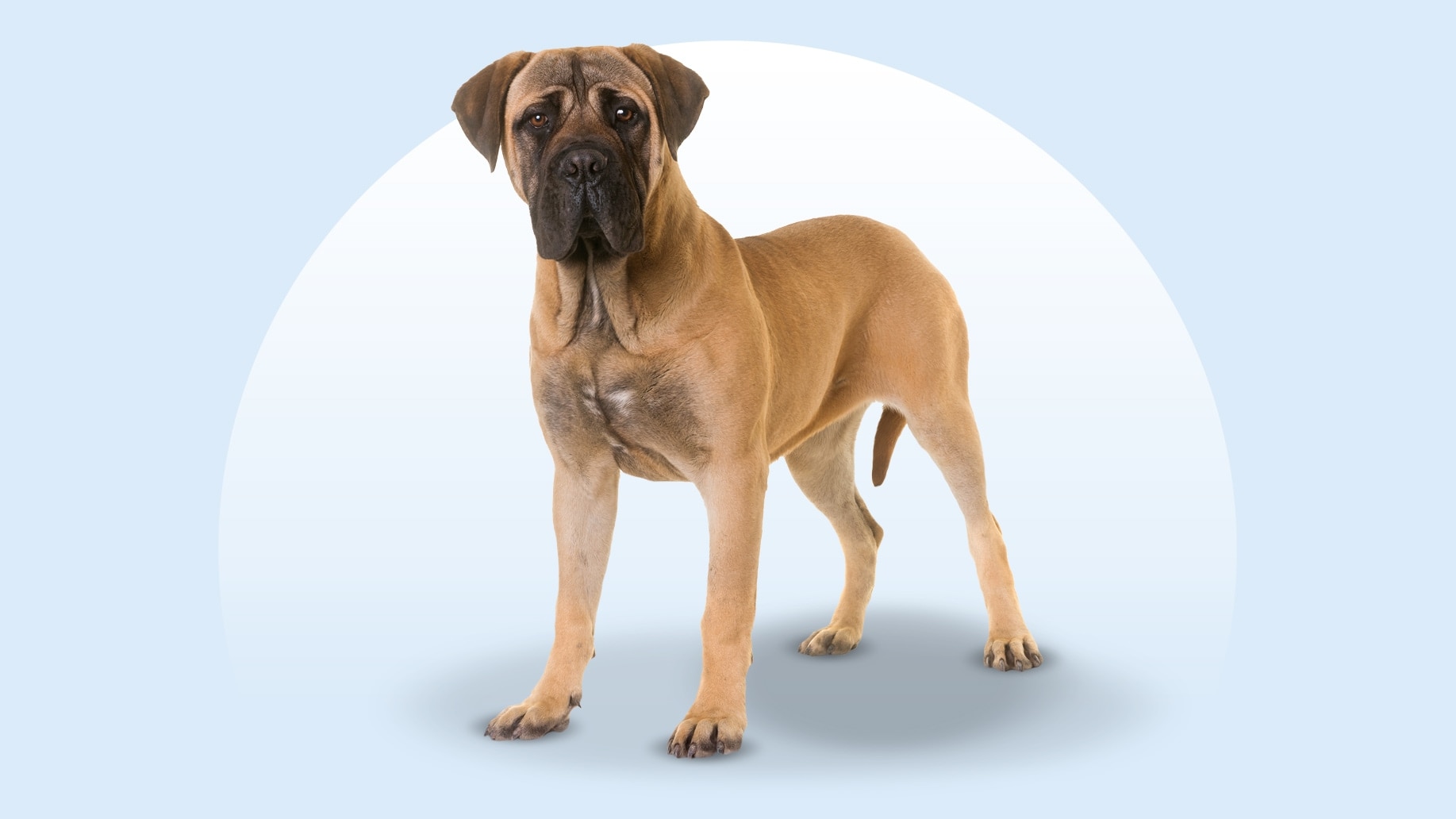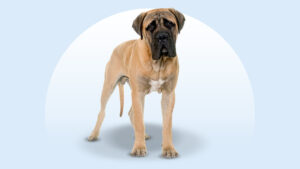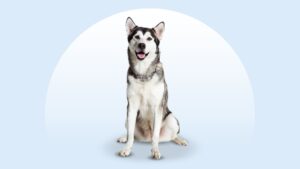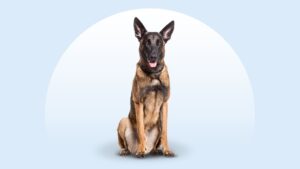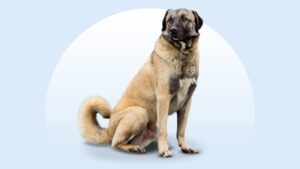Bullmastiff
Updated December 15, 2025
Bullmastiff
Updated December 15, 2025
The loyal and gentle Bullmastiff doesn’t realize they’re so big, so they need a dedicated pet parent who can train them to be as graceful as possible. Great family dogs, Bullmastiffs have no interest in being star athletes, but they’ll still want to get outside and smell the flowers.
Affectionate, Confident, Clumsy
100–130 pounds
24–27 pounds
7–9 years
Fawn, Red, Brindle
If there’s a new canine in the neighborhood with chunky paws, an attentive gaze, and a body that looks like you super-sized a Pug, it might be a Bullmastiff.
A descendant of the Mastiff and Bulldog, you can try to tell a Bullmastiff they’re not the size of a Chihuahua, but this giant dog simply won’t believe you—and will probably try to sit on your lap anyway.
These gentle-hearted dogs are as clumsy as a bull in a china shop (it’s hard to be graceful when you’re this big), but they’ll try to make you proud anyway. Bullmastiffs just want you to love them back, and they’ll affectionately lean against you to show they care.
Bullmastiff Characteristics
Bullmastiff Appearance
The Bullmastiff dog breed has a wrinkled head with a dark face mask, a short and square muzzle, and adorably floppy ears.
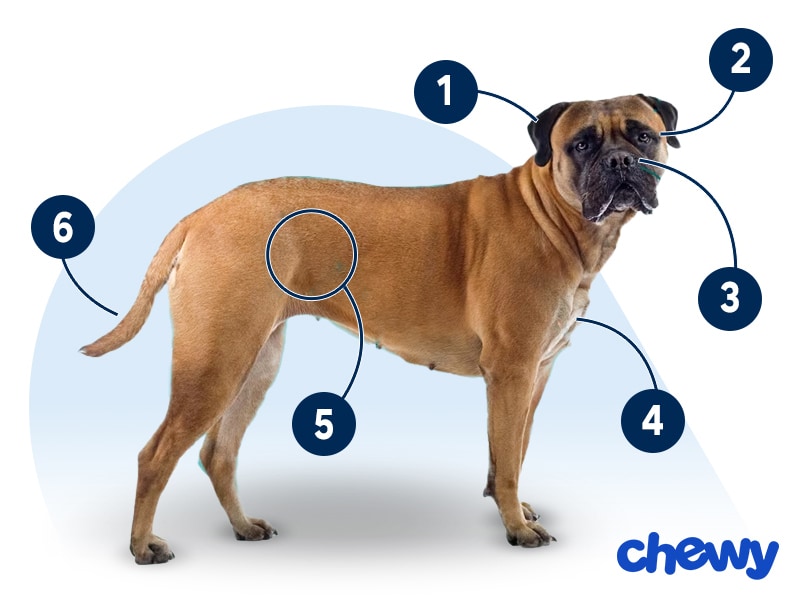
- Ears
Their ears are V-shaped, floppy, and held close to the cheeks.
- Eyes
Bullmastiffs have dark, medium-sized eyes.
- Nose
Their nose is squished and black with large nostrils.
- Coat Length
The Bullmastiff dog breed's coat is short and dense.
- Coat Color
Bullmastiff colors include red, fawn, or brindle (a subtle tiger stripe). They may have a small white spot on their chest.
- Tail
Their tail is long and may be straight or curved.
Bullmastiff Temperament
The Bullmastiff personality is a delight: They’re affectionate, happy-go-lucky pups who form deep bonds with their humans. They’re also adorably faithful companions who sometimes act like they’re the size of a much smaller pooch.
A big softie, the Bullmastiff isn’t much of a barker, and while they may or may not smother you with kisses, they will likely lean into you to show how much they love you.
These dogs appreciate the company of people, so don’t even think about leaving them alone for too long, particularly in the backyard. Chances are, they’ll come asking when you’re going to join for a rousing game of fetch.
If they’re wary of anyone, it might be strangers. Otherwise, Bullmastiffs are confident and assured, and consistent socialization can go a long way toward helping them accept everyone in your circle.
These gentle giants come off a bit clumsy, but it’s less a personality trait and more a casualty of their huge size. Keep an eye on small children or animals when they’re around just to be sure your pup doesn’t inadvertently knock into anyone—they’ll probably be very embarrassed to realize they goofed!
How to Care for a Bullmastiff
It’s easy to keep a Bullmastiff’s coat healthy and shiny if you keep up with brushing. And they don’t need excessive exercise; most of your time will be spent on training.
Grooming
Training
Diet
Exercise
Environment
Bullmastiff Health
The average Bullmastiff lifespan is 7–9 years. It’s on the shorter end of the dog life expectancy spectrum because giant dogs don’t typically live as long as smaller breeds. Here are some health issues to be aware of.
- Bloat and gastric dilatation-volvulus (GDV): Bullmastiffs, like other giant, deep-chested breeds, are prone to a life-threatening condition called bloat in which the stomach distends with air and/or food. A serious complication of bloat is gastric dilatation-volvulus, when the stomach twists on itself, cutting off blood supply to the organs. Go to the vet immediately if you notice symptoms like abdominal distension, restlessness, and dry heaving.
- Cancer: Bullmastiffs have an increased risk of lymphoma, a cancer of the white blood cells that is typically treated with chemotherapy. Let your vet know if you notice any unusual lumps on your dog. A type of bone cancer, osteosarcoma, is also common in large- and giant-breed dogs. The first sign is limping.
- Dilated cardiomyopathy: Dilated cardiomyopathy is a genetic condition where the heart enlarges, resulting in heart failure. Diagnosis is based on an echocardiogram and treatment is often daily medication.
- Elbow and hip dysplasia: Elbow and hip dysplasia are genetic conditions that develop when the joints don’t align well and become loose. Signs include limping, and treatment might involve weight loss, reduced activity, joint supplements, physical therapy, pain meds, or even surgery.
- Eye issues: Bullmastiffs are prone to entropion, in which the eyelid folds inward. It doesn’t usually affect vision, but can cause irritation and discomfort. In severe cases, it can lead to eye ulcers. Your vet may recommend a topical ointment to lubricate the eyes or, in severe cases, surgery.
Bullmastiff History
With the Industrial Revolution in full force, people struggled to put food on the table, and many resorted to poaching game from country estates or game preserves of the English aristocracy (in other words, stealing from rich people).
While desperate times might call for desperate measures, the wealthy weren’t on board with sharing their food. So, they brought in a guardian dog who could look over the flocks and ward off strangers.
That’s how the English Bullmastiff came to be in the mid-to-late 19th century. A cross between the Bulldog and the Mastiff, many of these early pups were brindle Bullmastiffs, meaning that they had coats with subtle tiger stripes so they’d be perfectly camouflaged at night.
These canines became popular show dogs, competing in exhibitions, and they were also employed to guard mines in South Africa. In 1933, the Bullmastiff was recognized by the American Kennel Club.
Bullmastiff puppies tend to cost between $2,000–$3,000. If you choose this route, pick a responsible breeder.
You can also consider Bullmastiff adoption, as there are many of these pups looking for their forever homes. Reach out to a Bullmastiff rescue or giant-breed rescue (like Big Dogs Huge Paws), keep an eye out at your local animal shelter, or search Chewy’s database of adoptable dogs in your area.
